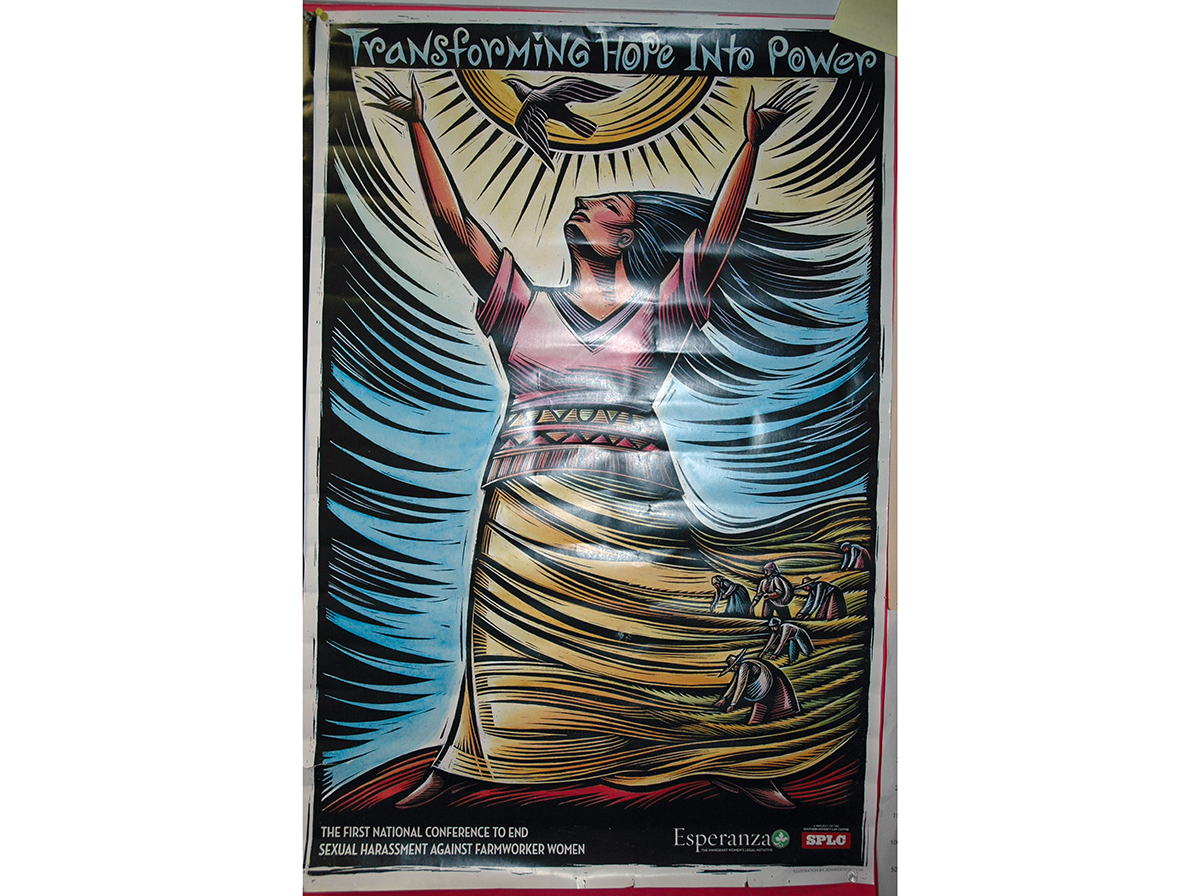
by Lola Loustaunau, PhD candidate, Department of Sociology
“One time I hurt my back, because the work there is really heavy, and I remember she [the human resource director] made me cry, gave a warning and wouldn’t let me go to the doctor, and I felt so bad,” said Mercedes, a bakery worker, while seated on her couch. It’s an icy winter morning and we have been talking for a while. Although I had asked about work injuries the answer that Mercedes gave me went beyond stating that she had, in fact, injured her back while working.
This project started with the intention of looking into the working conditions and following a unionizing campaign at an industrial bakery in Portland, Oregon, that employed a majority of women migrant workers who were not proficient in English. Using a grounded theory approach, I conducted twenty interviews, participated in workers meetings, and analyzed written sources such as legal documents, Occupational Safety and Health Administration (OSHA) reports, news articles, and internal documents and policies produced by the company. As I worked through the interviews that make up most of the empirical data for this project I couldn’t help but noticing how, when asked about their working conditions, workers articulated their responses discussing how they felt, discussing emotions, even though they weren’t being specifically asked about them. A group of emotions were salient in all the interviews, and to me revealed the existence of an emotional structure that is constitutive of the precarious working conditions they faced.
Speaking of emotional structure of precarious labor means recapturing a key aspect of the work experience that has been usually ignored or cast aside, separated from the ‘objective’ working conditions and understood merely in terms of a ‘subjective tone’. But the emotional structure of precarious labor does not just overlay or ‘color’ the workers experience of precarious labor but is an integral aspect of that experience. Emotion and experience are co-constitutive: how the workers feel while they are working is part of what the work experience is.
What my research seeks to highlight is that besides enduring long work days and work weeks, poverty wages, lack of benefits, lack of stability to provide care for their love ones, lack of proficiency of the prominent language used at the workplace, unsafe working conditions, verbal and physical violence, this group of migrant workers are also afraid, sad, feel powerless and angry while they are working on the line, and that these emotions constitute an integral aspect of their working conditions. These emotions are not illogical or isolated; they are related, interlocked and in tension. Contrary to the common understanding of emotions as a private matter, the ubiquitous presence of certain emotions in all the workers’ narratives reveals the existence of an emotional structure that is constitutive, in this case, of the experience of precarious migrant labor.
Emotions are not just personal; they are social and political phenomena. Examining the emotional structure of precarious labor allows us to explore how management co-produces and reinforces particular emotions and utilizes them to discipline and control the labor force. At the same time, emotions produce contradictory effects in regard to strategies and actions of resistance or attempting to achieve change in the workplace: workers don’t just passively accept their realities (Coulter 2013). In fact, in some cases, these emotions can mobilize workers to challenge their working conditions.
The worst expressions of degradation and disappointment were those in which the workers disclosed the sense that they were disposable, treated like slaves, not seen as fully human or akin to nonhuman animals. Elisa bluntly said, “It’s like you are a dog, no, not even a dog, dogs have more value there than we do.” She explained how she fell on the work floor and continued to work although her foot was visibly swollen “and no one asked me anything, no one cared, you are just treated like a dog.” It is important to ask then, what is being expressed when workers compare themselves to animals; one could certainly argue that at the heart of precarious migrant labor lies a feeling of not being human anymore.
Though these emotions were overwhelming and painful for the workers, they did not prevent them from also expressing a will to resist this dehumanizing process and the construction of themselves as disposable subjects. The borders inscribed in these workers’ bodies, borders that make them particularly ‘disposable’, are sites of struggle and contestation. Despite feeling powerless and sad, the workers narrated numerous situations in which individually or collectively they tried to resist or subvert the conditions they faced at the bakery. Refusing to sign a raise that was understood as too low, agreeing with the other workers on the line to reject staying overtime or sneaking out to avoid it, stopping the machine or slowing it down when the pace was too fast, using the same lack of proficiency of English that many times was a disadvantage, to pretending they did not understand an order they don’t want to follow, turning off the cellphone during their days off to avoid on-call shifts, and ultimately trying to unionize, are just some of the examples of forms in which workers resisted their working conditions.
Workers narratives provided insight on the presence of life at the center of the production process, and on the artificiality of the reduction of human beings to mere bearers of labor power. The labor-power feels; incorporating the emotional structure of precarious labor serves to gain a fuller understanding of the degradation of the working conditions in the twenty-first century. In the case of this group of precarious migrant workers, feeling less than human and comparing themselves to slaves appeared as the most clear expression of the emotional dimension of their disposability. In other words, alienation reappeared at the center of the emotional structure of precarious migrant labor. However, these same emotions appear to have potential to mobilize workers to change or resist this dehumanization. Workers narrated moving beyond individual experience of powerlessness, sadness and anger into collective forms of action and resistance, opening questions regarding the emotional structure of precarious migrant labor and the construction of sub-cultures of resistance. Further inquiries regarding the emotional experience of precarious migrant labor are needed to produce a more robust analysis, but nevertheless these workers’ stories are telling: emotions are at the heart of the workers’ experiences.
—Lola Loustaunau is a PhD student in the Department of Sociology and Graduate Research Assistant in the Labor Education and Research Center at the University of Oregon. Her research focuses on migrant workers experiences in precarious work arrangements, and collective organization in multi-ethnic, multi-lingual worksites.
Work Cited
Coulter, Kendra. 2013. “Feeling Resistance: Emotions and Gender in Retail Organizing.” WorkingUSA 16(2):191–206.

